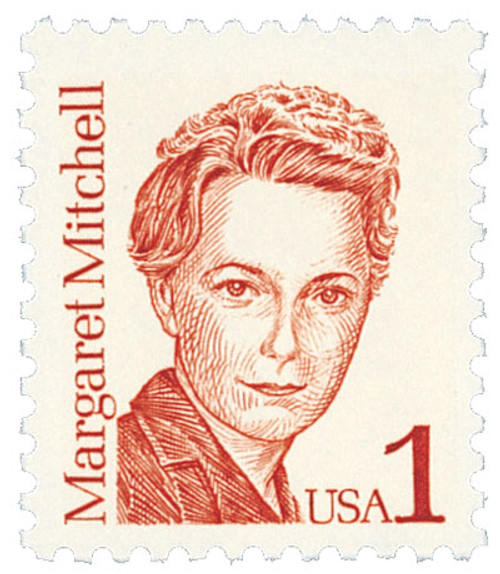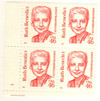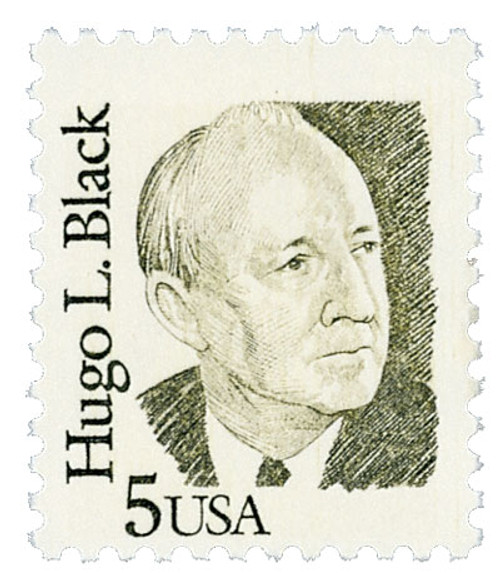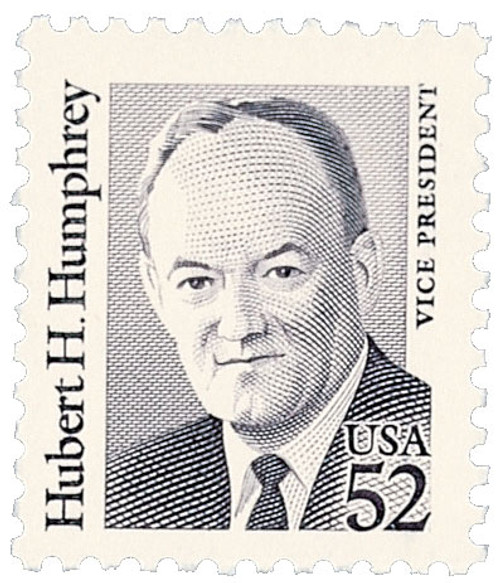
# 2938 PB - 1995 46c Great Americans: Ruth Benedict
US #2938
1995 Ruth Benedict
- 58th stamp in Great Americans Series
- Honors Anthropologist Ruth Benedict
Category of Stamp: Definitive
Set: Great Americans
Value: 46¢, ½-ounce letter rate to Canada, 1-ounce letter rate to Mexico
First Day of Issue: October 20, 1995
First Day City: Virginia Beach, Virginia
Quantity Issued: 200,000,000
Printed by: Bureau of Engraving and Printing
Printing Method/Format: Engraved. Panes of 100 (10 across, 10 down) from printing sleeves of 400 subjects (20 across, 20 down)
Perforations: 11.2 X11.1
Reason the stamp was issued: The Ruth Benedict stamp was the 58th face different stamp in the Great Americans series. It was issued to satisfy a rate change that took place on January 1, 1995.
About the stamp design: Roy Anderson produced the drawing of Benedict. The simple illustration reflects Benedict’s calm personality. Anderson based his work on a phot of Benedict most likely taken while she was a faculty member of Columbia University.
The subject and image of this stamp had been approved in 1983 for future use, but were held in reserve until 1995.
First Day City: The Benedict stamp was issued at Vapex stamp show in Virginia Beach, Virginia, though there was no official ceremony.
About the Great Americans Series:
The Great Americans Series was created to replace the Americana Series. The new series would be characterized by a standard definitive size, simple design, and monochromatic colors.
This simple design included a portrait, “USA,” the denomination, the person’s name, and in some cases, their occupation or reason for recognition. The first stamp in the new series was issued on December 27, 1980. It honored Sequoyah and fulfilled the new international postcard rate that would go into effect in January 1981.
The Great Americans Series would honor a wider range of people than the previous Prominent Americans and Liberty Series. While those series mainly honored presidents and politicians, the Great Americans Series featured people from many fields and ethnicities. They were individuals who were leaders in education, the military, literature, the arts, and human and civil rights. Plus, while the previous series only honored a few women, the Great Americans featured 15 women. This was also the first definitive series to honor Native Americans, with five stamps.
The Bureau of Engraving and Printing (BEP) produced most of the stamps, but private firms printed some. Several stamps saw multiple printings. The result was many different varieties, with tagging being the key to understanding them. Though there were also differences in perforations, gum, paper, and ink color.
The final stamp in the series was issued on July 17, 1999, honoring Justin S. Morrill. Spanning 20 years, the Great Americans was the longest-running US definitive series. It was also the largest series of face-different stamps, with a total of 63.
History the stamp represents:
Anthropologist Ruth Fulton Benedict was born on June 5, 1887, in New York City, New York. Her father died when she was very young, and her mother was grief stricken over it for the rest of her life. These experiences instilled in Benedict an interest in grief and how it was processed by different cultures.
Benedict attended Vassar College, where she found writing as a great way to express herself as an “intellectual radical,” as her classmates called her. Benedict graduated in 1909 with a degree in English Literature and then went on a one-year tour of Europe.
After returning, Benedict worked a variety of jobs, including social work and teaching. It was while she was teaching in California that she developed an interest in Asia that would later lead her to study anthropology. In the meantime, she returned to her family’s farm back east to find peace and meaning, as she had been unhappy with her jobs up to this point. It was during this time that she met and married Stanley Benedict. She began writing again and had some of her poems published under pseudonyms.
Benedict then attended the New School for Social Research in search of a new career. It was here that she really became interested in anthropology. She then transferred to Columbia, where she earned her PhD in anthropology in 1923. She began teaching the year before and among her students was Margaret Mead, who became her close friend. In 1931, she was made Assistant Professor in Anthropology.
Benedict wrote several books and papers over the years, one of the most notable being Patterns of Culture. In that, Benedict theorized that a small part of the range of possible human behavior is included in accepted forms of any given society. That cultural “personality” is then encouraged in its individuals. Benedict’s work spawned the “modal personality” of cultural behavior, which explains behavior based on a cluster of traits most commonly observed in the people of a given culture.
Recruited by the federal government for war-related research during World War II, Benedict was assigned two significant tasks. Her plainly written pamphlet, “Races of Mankind,” presented the scientific case against commonly held racist beliefs. Intended for distribution to American troops, the pamphlet debunked myths regarding racial differences in blood type, brain size, and intelligence.
Benedict also analyzed the behavior of the Japanese emperor and his significance in the willingness of the Japanese people to proceed at any costs against the Allied nations. Benedict advised President Franklin D. Roosevelt that the emperor must be allowed to remain as part of an eventual surrender offer.
Benedict was elected a Fellow of the American Academy of Arts and Sciences in 1947 and was finally made a full professor in 1948, however she died two months later on September 17, 1948. The American Anthropology Association now awards an annual prize named in her honor.
US #2938
1995 Ruth Benedict
- 58th stamp in Great Americans Series
- Honors Anthropologist Ruth Benedict
Category of Stamp: Definitive
Set: Great Americans
Value: 46¢, ½-ounce letter rate to Canada, 1-ounce letter rate to Mexico
First Day of Issue: October 20, 1995
First Day City: Virginia Beach, Virginia
Quantity Issued: 200,000,000
Printed by: Bureau of Engraving and Printing
Printing Method/Format: Engraved. Panes of 100 (10 across, 10 down) from printing sleeves of 400 subjects (20 across, 20 down)
Perforations: 11.2 X11.1
Reason the stamp was issued: The Ruth Benedict stamp was the 58th face different stamp in the Great Americans series. It was issued to satisfy a rate change that took place on January 1, 1995.
About the stamp design: Roy Anderson produced the drawing of Benedict. The simple illustration reflects Benedict’s calm personality. Anderson based his work on a phot of Benedict most likely taken while she was a faculty member of Columbia University.
The subject and image of this stamp had been approved in 1983 for future use, but were held in reserve until 1995.
First Day City: The Benedict stamp was issued at Vapex stamp show in Virginia Beach, Virginia, though there was no official ceremony.
About the Great Americans Series:
The Great Americans Series was created to replace the Americana Series. The new series would be characterized by a standard definitive size, simple design, and monochromatic colors.
This simple design included a portrait, “USA,” the denomination, the person’s name, and in some cases, their occupation or reason for recognition. The first stamp in the new series was issued on December 27, 1980. It honored Sequoyah and fulfilled the new international postcard rate that would go into effect in January 1981.
The Great Americans Series would honor a wider range of people than the previous Prominent Americans and Liberty Series. While those series mainly honored presidents and politicians, the Great Americans Series featured people from many fields and ethnicities. They were individuals who were leaders in education, the military, literature, the arts, and human and civil rights. Plus, while the previous series only honored a few women, the Great Americans featured 15 women. This was also the first definitive series to honor Native Americans, with five stamps.
The Bureau of Engraving and Printing (BEP) produced most of the stamps, but private firms printed some. Several stamps saw multiple printings. The result was many different varieties, with tagging being the key to understanding them. Though there were also differences in perforations, gum, paper, and ink color.
The final stamp in the series was issued on July 17, 1999, honoring Justin S. Morrill. Spanning 20 years, the Great Americans was the longest-running US definitive series. It was also the largest series of face-different stamps, with a total of 63.
History the stamp represents:
Anthropologist Ruth Fulton Benedict was born on June 5, 1887, in New York City, New York. Her father died when she was very young, and her mother was grief stricken over it for the rest of her life. These experiences instilled in Benedict an interest in grief and how it was processed by different cultures.
Benedict attended Vassar College, where she found writing as a great way to express herself as an “intellectual radical,” as her classmates called her. Benedict graduated in 1909 with a degree in English Literature and then went on a one-year tour of Europe.
After returning, Benedict worked a variety of jobs, including social work and teaching. It was while she was teaching in California that she developed an interest in Asia that would later lead her to study anthropology. In the meantime, she returned to her family’s farm back east to find peace and meaning, as she had been unhappy with her jobs up to this point. It was during this time that she met and married Stanley Benedict. She began writing again and had some of her poems published under pseudonyms.
Benedict then attended the New School for Social Research in search of a new career. It was here that she really became interested in anthropology. She then transferred to Columbia, where she earned her PhD in anthropology in 1923. She began teaching the year before and among her students was Margaret Mead, who became her close friend. In 1931, she was made Assistant Professor in Anthropology.
Benedict wrote several books and papers over the years, one of the most notable being Patterns of Culture. In that, Benedict theorized that a small part of the range of possible human behavior is included in accepted forms of any given society. That cultural “personality” is then encouraged in its individuals. Benedict’s work spawned the “modal personality” of cultural behavior, which explains behavior based on a cluster of traits most commonly observed in the people of a given culture.
Recruited by the federal government for war-related research during World War II, Benedict was assigned two significant tasks. Her plainly written pamphlet, “Races of Mankind,” presented the scientific case against commonly held racist beliefs. Intended for distribution to American troops, the pamphlet debunked myths regarding racial differences in blood type, brain size, and intelligence.
Benedict also analyzed the behavior of the Japanese emperor and his significance in the willingness of the Japanese people to proceed at any costs against the Allied nations. Benedict advised President Franklin D. Roosevelt that the emperor must be allowed to remain as part of an eventual surrender offer.
Benedict was elected a Fellow of the American Academy of Arts and Sciences in 1947 and was finally made a full professor in 1948, however she died two months later on September 17, 1948. The American Anthropology Association now awards an annual prize named in her honor.














